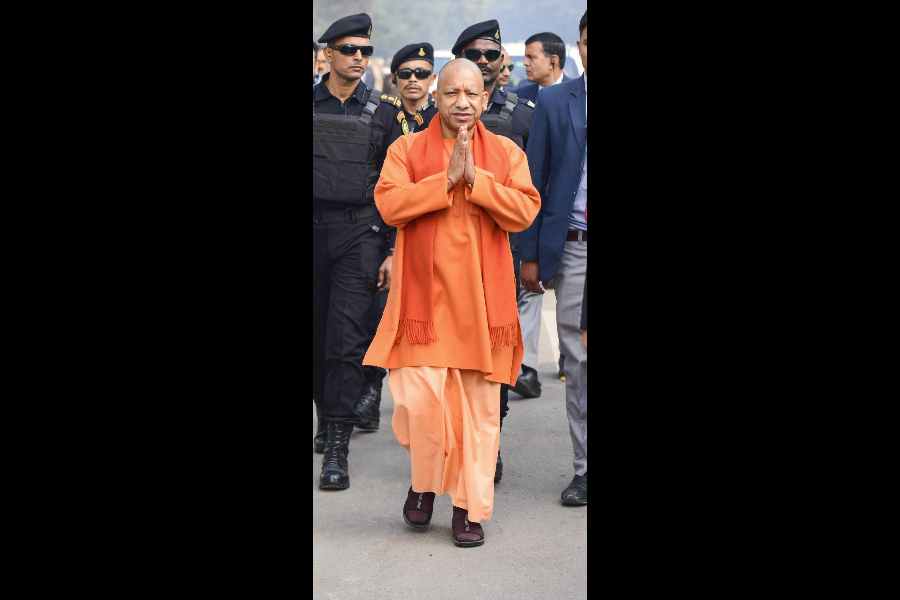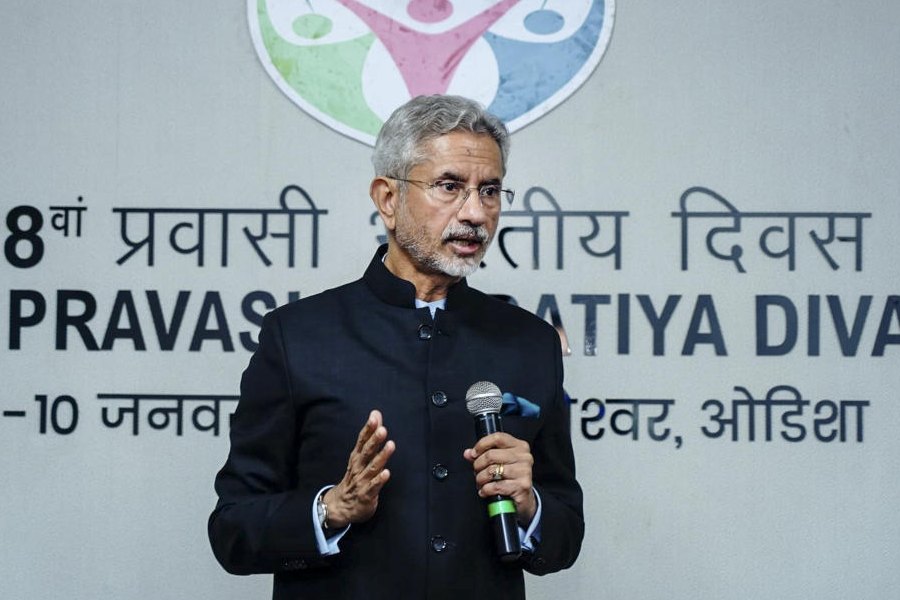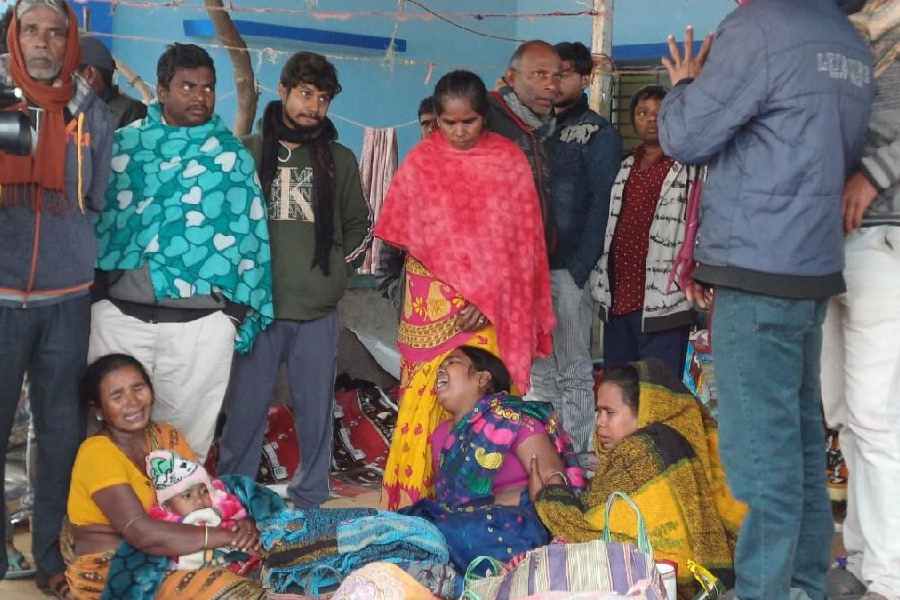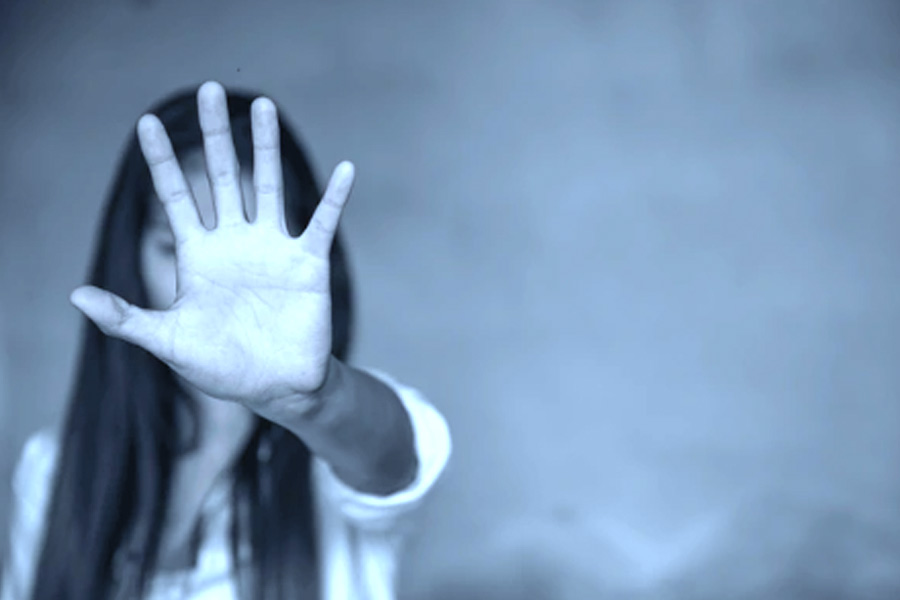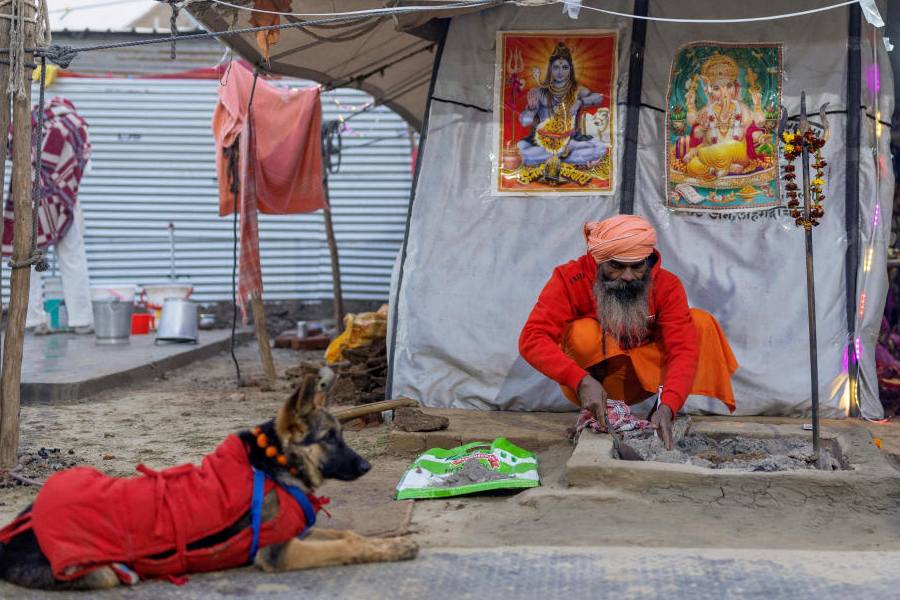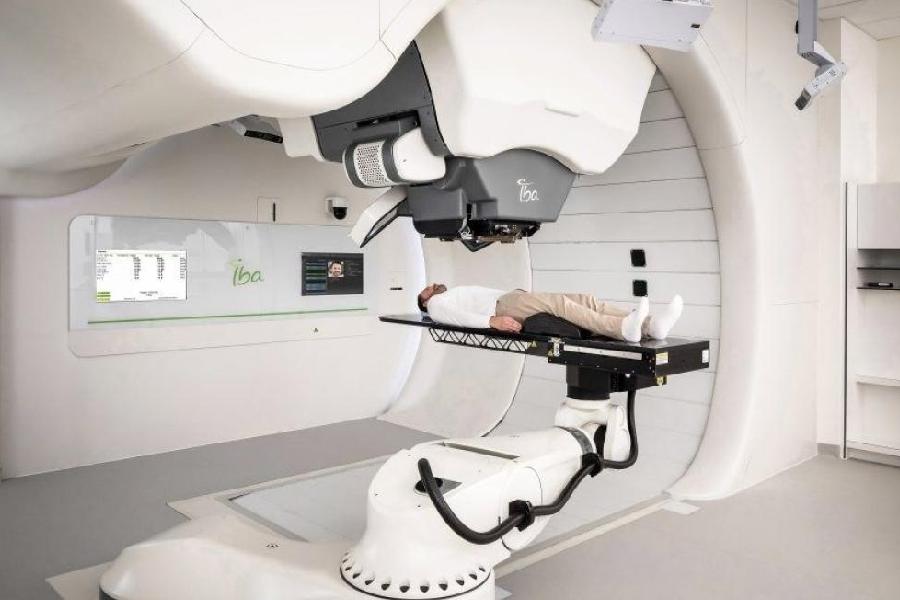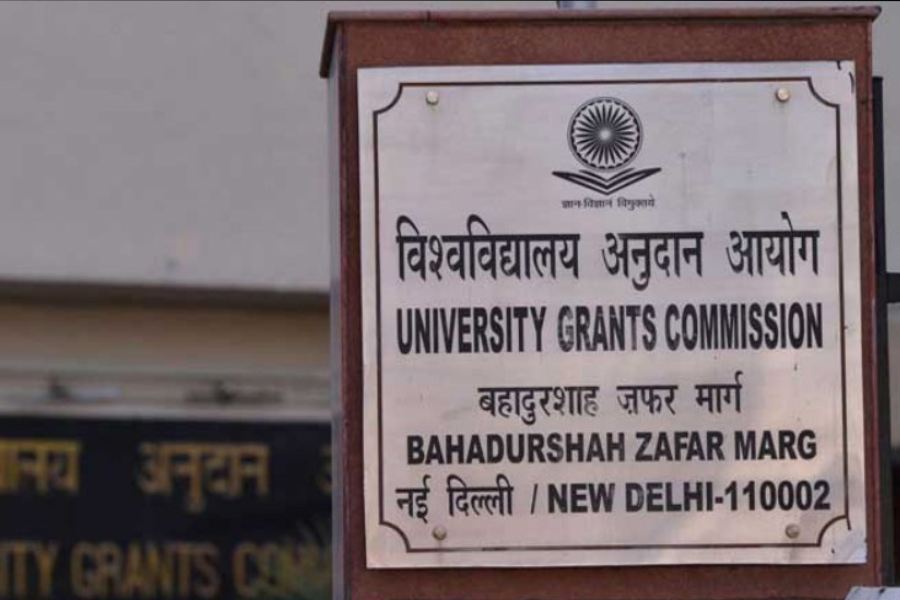Yogi Adityanath on Saturday claimed that Hindu religious places would be targeted if the community was divided along caste lines, effectively continuing with his “batenge toh katenge” line to buttress his Hindu supremacy agenda and keep the Hindu vote intact.
“We will suffer if there’s any division based on caste. Sanatan Dharma and the country will be strong if we are united. But our religious places will face the worst consequences if we are divided on linguistic, regional and caste lines,” Adityanath said.
The Uttar Pradesh chief minister was addressing a gathering after inaugurating a three-day event on what is being billed as the first anniversary of the consecration of the Ram temple in Ayodhya.
Prime Minister Narendra Modi consecrated the temple on January 22 last year. However, the Ram Janmabhoomi Teerth Kshetra — which manages the shrine — said the anniversary event was being inaugurated on Saturday in keeping with the Hindu calendar.
Adityanath’s remark assumes significance against the backdrop of the BJP and its associated Hindutva groups raking up a rash of mosque-temple disputes since the construction of the Ram temple. These groups claim that Muslim rulers had built many mosques, a majority of them in Uttar Pradesh, after destroying temples.
Allegedly encouraged by the state government, these groups have flooded the courts with petitions seeking surveys of these mosques to establish their claim and the eventual handover of the sites to Hindus.
Adityanath had coined the slogan “batenge toh katenge (divided, we’ll be slaughtered)” during the campaign for last year’s Maharashtra Assembly elections. It was meant to urge Hindu voters not to support the Samajwadi Party or the Congress, which were demanding a caste census.
The slogan was lambasted as divisive but the BJP-led Mahayuti swept the polls.
On Saturday, Adityanath bowed in front of the Ram Lalla idol and performed arti at the temple, the government said in a statement. He also offered prayers at the nearby Hanumangarhi Temple.
The state government has decorated Ayodhya town with lights and festoons and hired cultural groups to sing devotional songs and dance along the roads connecting the temple to the airport and railway station.
Adityanath claimed that 1.5 lakh devotees visit the Ram temple every day and added that the temple’s first and second floors would be ready in the next two years.
“Earlier, Ayodhya used to get (only) 3-4 hours of electricity but now there are no power cuts here. Water at the Ram Ki Paidi in the River Saryu was polluted, but now we are providing clean water there,” he said.
“We have installed solar lights across the city and built an airport. The city resembles (what it used to be in) the Treta Yuga (the era Ram lived in).”

